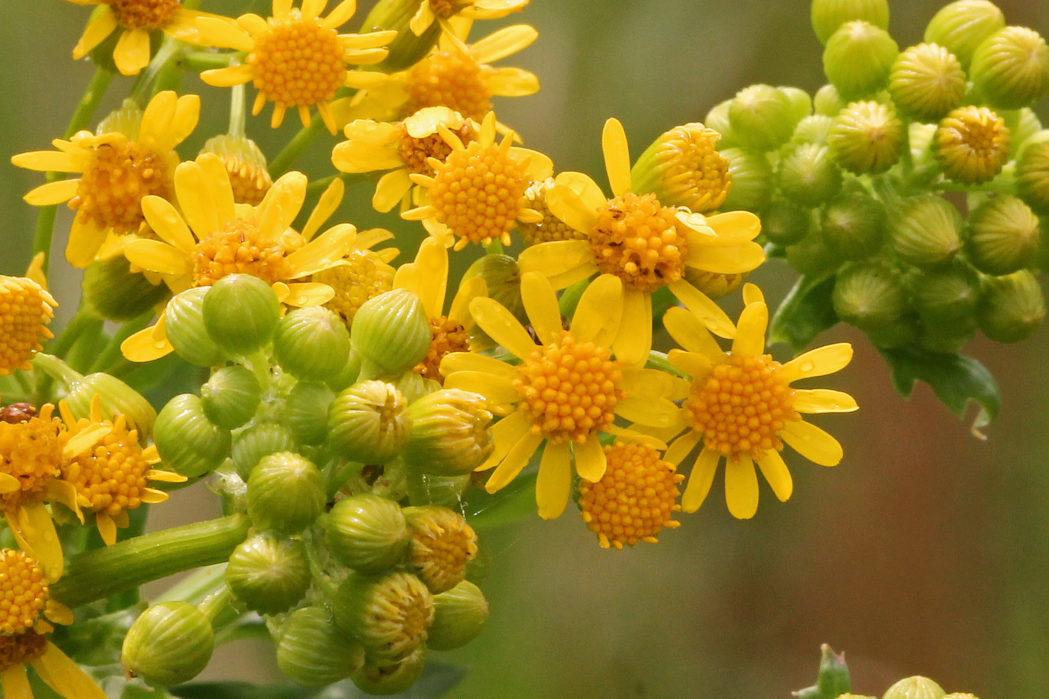Butterweed
Pictured above: Butterweed (Packera glabella) by Mary Keim. Click on terms for botanical definitions. View post as a PDF.
Butterweed (Packera glabella, form. Senecio glabellus) is an herbaceous annual that produces a conspicuous and striking mass of bright yellow blooms. Both disk and ray florets are yellow to golden. The bright green stem is hollow and glabrous. Leaves are dissected with rounded lobes. They are alternately arranged and get smaller as they move up the stem. Seeds are borne in brown achenes.
Butterweed first appears in fall or winter as a basal rosette. Before it blooms, it is sometimes confused with mustard, as both have multi-lobed and rounded leaves. The composite flowers of butterweed, however, clearly identify it as a member of the aster family and not the mustard (Brassicaceae) family. And unlike mustard, butterweed can be toxic if eaten.
Butterweed is one of the first wildflowers to bloom in early spring. It grows in dense stands that illuminate moist roadsides and river edges. It also occurs naturally in alluvial forests and wet, disturbed sites and attracts a variety of pollinators.
Family: Asteraceae (Aster, daisy or composite family)
Native range: Nearly throughout
To see where natural populations of butterweed have been vouchered, visit www.florida.plantatlas.usf.edu.
Hardiness: 8A-10B
Soil: Moist to inundated or seasonally flooded soils
Exposure: Partial shade to full sun
Growth habit: up to 3’+ tall
Propagation: Seed
Garden tips: Unlike other species of Packera, butterweed is not commercially available. It is easily propagated from seed, however, if collected when ripe and sown immediately.* Favorable soil conditions (not too dry) must be maintained for butterweed to thrive.
*Be sure to get permission before collecting seed on private property.

